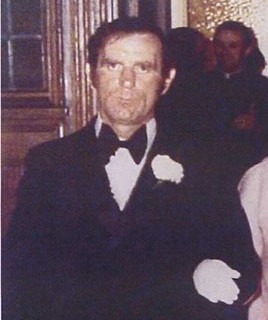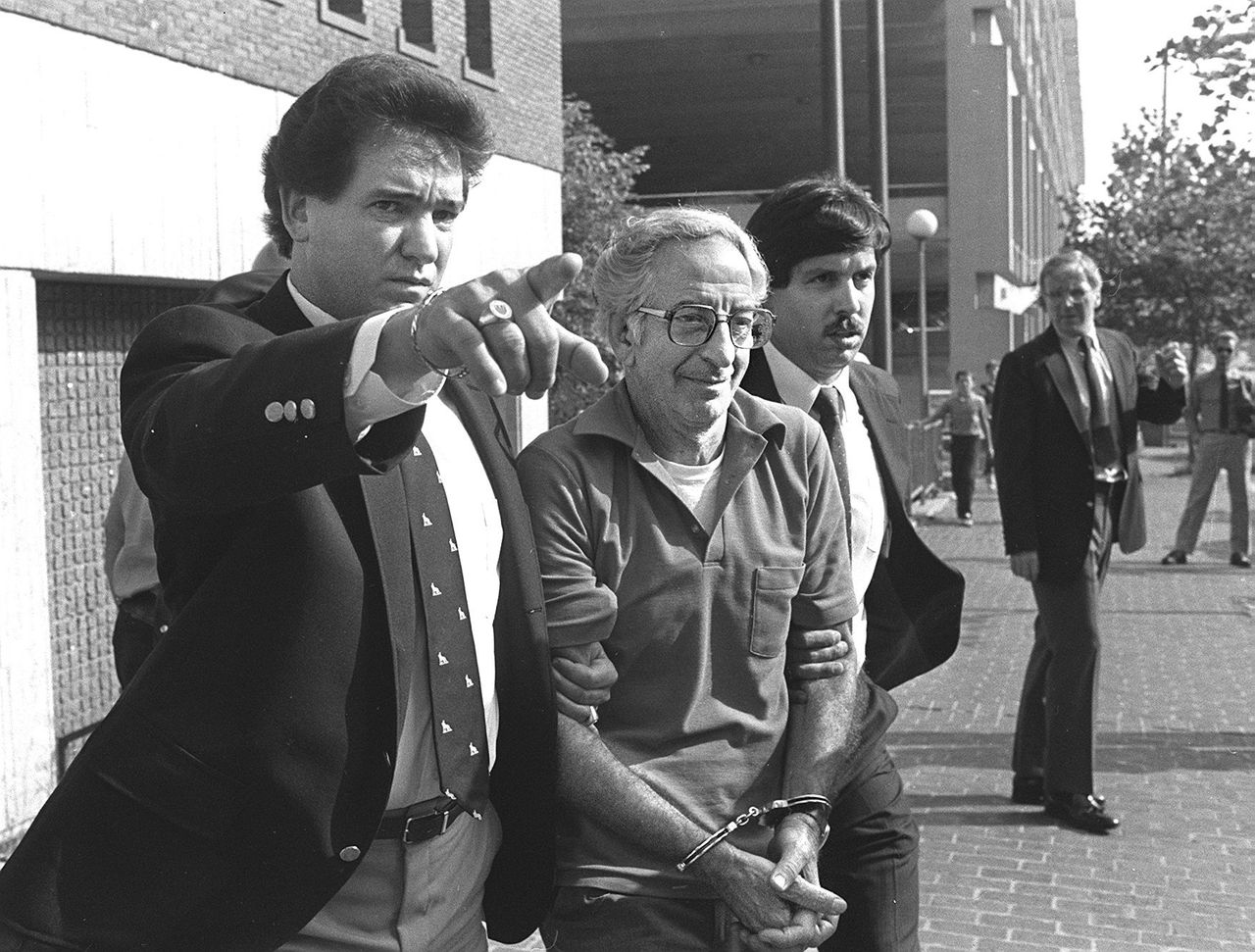One of the most famous evictions took place in July, 1888, on the Vandeleur Estate near Kilrush, Co. Clare. Photographs from the evictions are held at the National Library of Ireland and the Clare County Library. The photos were not taken by locals but by tourists visiting from America, there is some suggestion that the tourists were really activists of Clan na Gael and had been a Canadian Fenian.
In the decades after the Great Famine in Ireland, absentee landlords showed little mercy on their tenant farmers and their families. Instead, landlords would hike rent without regard to their tenants’ ability to pay, and would have their tenants evicted when they could not pay.
Evictions on the Vandeleur estate in Co. Clare, which was owned by an absentee landlord, Captain Hector S. Vandeleur, lasted two weeks, families were forcibly removed from their homes and new evictions carried out day after day. The authorities had strength in numbers and a battering ram, which they used to destroy many houses.
In response, there was a campaign of civil resistance and unrest as tenants refused to leave, preventing the authorities from removing them from their homes, resisting by whatever means necessary, pouring boiling water on the officers, setting fires to create barriers, or barricading themselves inside. In most cases, the goal was not to prevent being evicted but to put up a fight.
Secret societies also formed throughout Ireland, such as the Molly Maguires, who used more forceful tactics frequently against land agents, middlemen, and tenants. Merchants and millers were often threatened or attacked if their prices were high. Landlords’ agents were threatened, beaten, and assassinated while new tenants on lands secured by evictions also became targets. There is also strong evidence of Molly Maguire activity in Liverpool, U.K and famously in Pennsylvania’s coal mining district, where similar tactics were used against mining companies in the miners strikes in the 1860′ & 1870’s.
The Molly Maguires were portrayed in a movie in the 1970’s starring Sean Connery & Richard Harris, the story was based on true events, the Pennsylvanian Miners Strikes of the 1860’s & 70’s, they also featured in a song by the Irish folk band, The Dubliners.
With Irish immigration into the U.S at high rates many immigrants also set up societies in their new homeland, such as the Ancient Order of Hibernians, who’s purpose was to act as guards to protect Catholic churches from anti-Catholic or Nativist forces in the mid-19th century, and to assist Irish immigrants, especially those who faced discrimination or harsh coal mining working conditions.
Another such group was the Fenian Brotherhood, a group made up of almost 10,000 Amercian Civil war veterans. The Fenian Brotherhood forces invaded Canada from the US between 1866 & 1871, the goal was to hold Canada hostage in order for the return of Ireland from the British. There were 5 major raids into Canada however there was some brief success but eventually they they all ended in failure. Eventually the Fenian Brotherhood was dissolved and replaced by Clan na Gael.
Going back to the Vandeleur Evictions, it wasnt uncommon for large crowds to gather to watch evictions at the time, hundreds sometimes thousands were in attendance to watch. The evictions began on the 18th July 1888
The Clare Journal described the procession as follows:
First came an outpost of four Hussars in single file, behind them was a car-full of Emergency men. At their rear came one Hussar. Two Hussars followed, and then came Colonel Turner, D.M., behind who was a police orderly. The succeeding car contained Mr. T.W.Russell, M.P.: Mr. H. Studdert, the agent on the estate, and Captain E. Croker, the sub-sheriff. After these came a large body of police, and then a small crowd of Emergency men. After them came the battering ram on a cart- a powerfully constructed engine, the beam being about 30 feet long, heavily shod with iron. Following it came the chief body of the troop of Hussars, and a company of the Berkshire Infantry Regiment, with a store wagon: then a second detachment of police, followed by still more Hussars, a further section of police, and then cars of visitors and all sorts, many of them being Englishmen and Americans….
The first family that was to be evicted was that of Patrick McInerney at Dysert, McInerney himself was not present and his wife and family offered no resistance. About an hour after the McInerney’s house the party moved on to the house of James Finnucane at Clooneylissaun. Here the entrance was stuffed with bushes and heavy pieces of bog-deal. These were quickly cleared away and very little opposition was offered.
The crowds which included the evicting parties, army, police and onlookers was now 1¼ miles long, and next went to the house of Michael Cleary, near Moneypoint. Cleary, had strongly barricaded the house and was clearly prepared to resist. A cordon of police and soldiers were set up around the house, but at some distance. The only people allowed within this circle, apart from officials, were journalists and some English and American visitors.
The first action taken by the eviction party was to put a ladder against the side of the house and block the chimney with straw. Possession was then demanded-and the only reply heard was a laugh from some girls inside. The police were now ordered to fix their bayonets, while the bailiffs got to work with crowbars and hatchets, but there was little effect. An attack on the door moved it only slightly and hot water was thrown out from those inside. The tripod and battering ram were then brought up and after a long time eventually made a breach in the wall. A shower of hot water was thrown out through the breach.
Finally, a large section of the wall crashed down to a cheer from the Emergency men. Two girls and their two brothers who were in the house were arrested by the police and a court held in the field at which they were remanded until the following Monday, the girls were granted bail. The house was then knocked to the ground. When this had been done it was four o’clock and the procession returned to Kilrush, where every shop had put up its shutters for the day.
The following morning evictions took place again, there were now about 500 military and police taking part in the operation and they to evict Patrick Spellissy of Moyadda. Here the battering ram had to be used. There were just two further evictions on this day, both of them involving men named Madigan at Carnacalla. After some resistance, including the throwing of boiling water at the evictors, the battering ram did its work. It was estimated that about 10,000 people were present at the Thursday afternoon evictions.
The evictions took a short break and resumed again on the 24th & 25th of July. The eviction that got most of the attention and the one that became a turning point in the campaign came on the morning of the 26th of July. The house of Matthias McGrath of Moyasta, was scheduled for eviction. The house was firmly barricaded and the battering ram was used. When the first breach was made in the wall, a shower of filth was thrown out which narrowly missed one of the magistrates, Mr. Roche. Finally, the police got into the house and overpowered Patrick McGrath, son of the owner.
The Clare Journal reported.
The struggle was for the moment dreadful. McGrath laid about him with extraordinary vigour. He had stones and missiles of all sorts around him, but he struck out with his fists and fought with the courage of a lion, but the numbers against him were more than a dozen such men could cope with, and he was at last pulled violently, still resisting, through the breach over the rubbish, when he was thrown to the ground for the purpose of having the handcuffs put on him. He presented a shocking appearance as he lay gasping for breath under the weight of several policemen, with the blood pouring from his battered head, while to add to the frightfulness of the scene, his mother was filling the air with her shrieks and lamentations…
The photographs taken throughout these evictions were published in two newspapers in New York and on in Canada in 1889 and in an American magazine called The Gael which were published in 1901.
Sources:
https://www.irishcentral.com/
http://www.clarelibrary.ie
https://www.thecanadianencyclopedia


























